Page Contents
Deciding on Booth Size
Choosing the right exhibit booth size affects your budget and influences how potential clients perceive your brand and interact with your products. A well-chosen booth size can significantly enhance your visibility, engagement, and, ultimately, your return on investment. This article delves into the various booth size options available, how to determine the right size for your business, and key considerations to ensure you make the most informed decision possible.
Exploring Trade Show Booth Dimensions: What Are Your Options?
Understanding the various trade show booth dimensions available is the first step in making an informed decision about your exhibit space. Trade shows typically offer several standard booth sizes to accommodate businesses of different scales and needs. Beyond these standard options, there are custom sizes and larger configurations that can be tailored to meet specific requirements. Additionally, your booth layout plays a significant role in its effectiveness, with common layouts offering different levels of visibility and visitor engagement.
Standard Trade Show Booth Size Options: What Are the Industry Norms?
Trade show organizers typically offer a range of standard booth sizes designed to suit businesses of various sizes and exhibit needs. These standard sizes provide a good starting point for most exhibitors, offering a balance between space and cost. Understanding these industry norms can help you choose a booth size that aligns with your objectives and budget.
10×10 feet: This is the most common size, ideal for small businesses or first-time exhibitors. It’s compact and cost-effective, providing enough space to showcase key products and engage with visitors.

10×20 feet: This booth size is suitable for medium-sized businesses and offers more space for displays and interaction areas. It’s perfect for companies that need to showcase a wider range of products or want to create a more inviting environment.
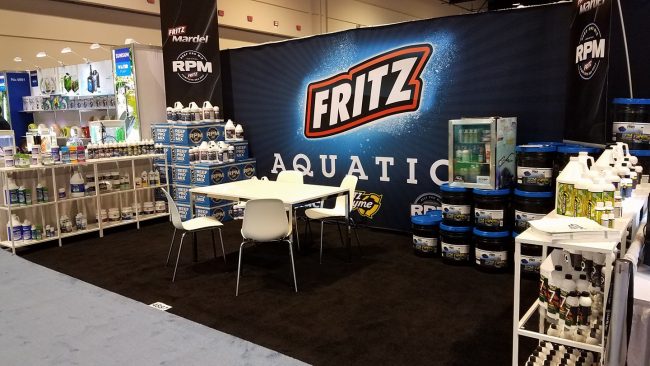
20×20 feet: Designed for large businesses or those with significant exhibit needs, this size allows for elaborate displays and multiple engagement areas. It’s ideal for making a strong visual impact and accommodating more visitors.
Beyond the Basics: Additional Trade Show Booth Sizes
While standard booth sizes are common, many businesses require more tailored solutions. Custom sizes and larger configurations provide flexibility, allowing you to design a booth that perfectly fits your needs. These options benefit businesses with extensive exhibits or unique display requirements.
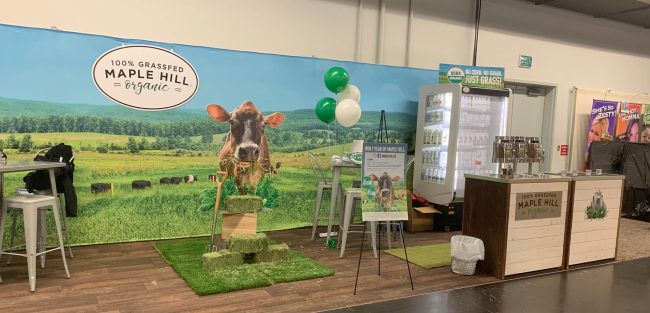
- Custom sizes: Tailored to fit unique requirements, these booths can be designed in various dimensions to optimize space and functionality.
- Larger configurations such as 20×30 and 30×30: For businesses with extensive exhibit plans, these sizes provide ample space for large displays, interactive zones, and private meeting areas.
Common Booth Layouts
The layout of your booth is just as important as its size. Different layouts offer varying levels of visibility and engagement potential. Common layouts like inline, peninsula, and island booths each have their advantages, depending on your goals and the flow of the trade show floor.
The layout of your booth is as important as its size. Common booth layouts include:
- Inline booths are standard, single-row booths with one side open to the aisle. They are cost-effective and straightforward.
- Peninsula booths: These have three sides open to aisles, offering increased visibility and accessibility from multiple directions.
- Island booths: With four sides open to the aisles, island booths provide maximum exposure and visitor flow, making them ideal for high-traffic areas.
Determining the Perfect Trade Show Booth Size for Your Business
Choosing the right booth size involves more than just selecting a standard option; it requires carefully assessing various factors specific to your business. This section will guide you through key considerations, including venue regulations, budget constraints, business goals, and competitive analysis. Addressing these factors lets you determine the most suitable booth size that maximizes your trade show impact.
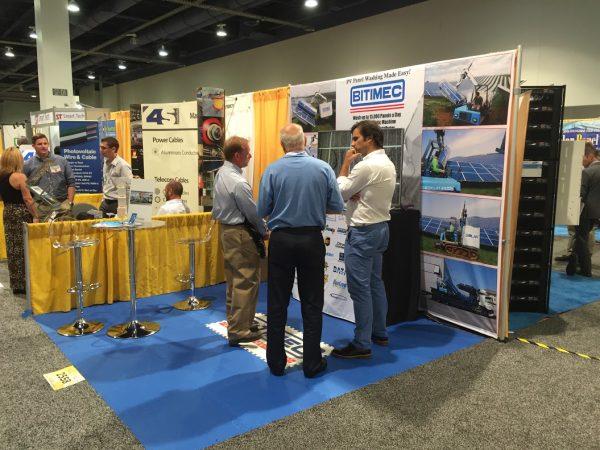
Venue Regulations and Expectations
Before you can decide on the perfect booth size, it’s essential to understand and comply with the venue’s specific regulations and expectations. Each venue may have different size restrictions, spatial limitations, and guidelines that you must follow. Familiarizing yourself with these requirements will help you avoid compliance issues and ensure a smooth setup process.
- Size restrictions: Some venues have strict guidelines on the maximum and minimum booth sizes allowed. Ensure your chosen size fits within these parameters.
- Spatial limitations: Venues may limit the height and width of displays, signage, and other elements. Familiarize yourself with these rules to avoid last-minute adjustments.
Budget Considerations: Matching Size with Financial Capacity
Balancing your desired booth size with your financial capacity is crucial for a successful trade show experience. Larger booths generally come with higher costs for the space and additional elements like furnishings, displays, and staffing. This section will help you evaluate the cost implications of various booth sizes and provide strategies for maximizing impact while staying within budget.
- Cost implications: Larger booths generally come with higher costs, not only for the space itself but also for additional elements like furnishings, displays, and staffing.
- Maximizing impact: While staying within budget, aim to create a booth that effectively showcases your brand and engages visitors. Sometimes, a smaller, well-designed booth can be more impactful than a larger, underutilized space.
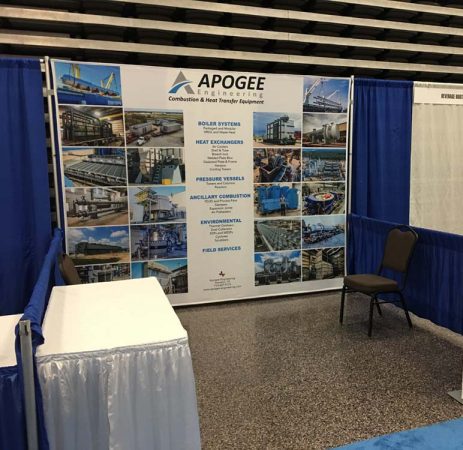
Aligning Booth Size with Business Goals and Needs
Your booth size should reflect your business objectives and operational needs. Whether focusing on product displays, demonstrations, lead generation, or sales, aligning your booth size with these goals is essential. This section will guide you in determining space requirements and ensuring your booth size effectively supports your marketing and sales objectives.
- Space requirements: Consider the space needed for product displays, demonstrations, and interactive areas. Ensure there’s room for visitors to move comfortably.
- Marketing and sales objectives: Align your booth size with your goals. For instance, if you aim to collect leads or conduct on-site sales, ensure sufficient space for these activities.
- Additional features: Assess the need for extra storage areas, private meeting rooms, or hospitality zones. These can enhance the visitor experience and support your trade show strategy.
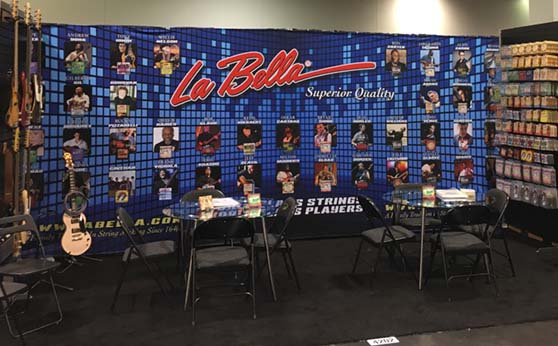
Competitive Analysis: Learning from the Competition
Analyzing your competitors’ booth sizes and setups can provide valuable insights for your decisions. Observing what works well for others in your industry can help you make informed choices about your booth size and layout. This section will discuss leveraging competitive analysis to refine your booth size and design strategy, ensuring you stand out at the trade show.
- Competitors’ booth sizes and setups: Observe what works well for your competitors regarding booth size and layout. This can help you make informed decisions about your booth.
- Standing out: Position your booth by offering something unique or superior in size, layout, or engagement features.
- Leveraging insights: Use competitive analysis to refine your booth size and design strategy, ensuring it aligns with industry standards while highlighting your unique strengths.
FAQ on Exhibit Booth Size
What is the size of a standard booth?
The most common standard booth size is 10×10 feet, widely used by small businesses and first-time exhibitors. Other standard sizes include 10×20 feet and 20×20 feet, which cater to medium and large businesses, respectively.
What is the standard booth dimension?
The standard booth dimension typically refers to a 10×10 feet space. This site is a staple at most trade shows and provides a compact yet effective area for displaying products and engaging with visitors.
What size are vendor booths?
Vendor booths can vary in size depending on the exhibitor’s needs and trade show regulations. Common sizes include 10×10 feet, 10×20 feet, and 20×20 feet. Custom sizes and larger configurations, like 20×30 feet, are also available for businesses with more extensive display requirements.
How to calculate booth size?
To calculate the booth size you need, consider the following factors:
- The amount of space required for product displays and demonstrations.
- The number of staff and visitors expected in the booth at any time.
- The layout and design elements, such as seating areas and storage.
- Your budget and the cost implications of different booth sizes. Start by estimating the total square footage needed to comfortably accommodate these elements.
How big is a 10×10 vendor booth?
A: A 10×10 vendor booth is 100 square feet in size. This compact space is suitable for small displays and a moderate number of visitors. It is ideal for small businesses and first-time exhibitors looking to make an impact without a large investment.
What is a 10×20 booth?
A: A 10×20 booth is a larger exhibit space measuring 200 square feet. This size offers more room for product displays, interactive areas, and visitor engagement. It is well-suited for medium-sized businesses that need additional space to showcase a wider range of products or create a more inviting environment.
What are the dimensions of a sales booth?
The dimensions of a sales booth can vary widely depending on the exhibitor’s needs and trade show regulations. Common dimensions include 10×10 feet, 10×20 feet, and 20×20 feet. Custom sizes can also be designed to meet specific requirements, providing flexibility for various sales strategies.
What size is a perimeter booth?
A perimeter booth typically refers to a booth located along the outer edges of the exhibit hall. These booths can vary, but common dimensions include 10×10 and 10×20 feet. Perimeter booths often have higher back walls, which can be advantageous for larger displays and signage.
How big is an inline booth?
An inline or linear booth is generally 10×10 feet in size. This booth type is arranged alongside other booths, with one side open to the aisle. Inline booths are a cost-effective and straightforward option for exhibitors, providing a standard space for product displays and visitor interaction.
Making the Right Choice for Trade Show Success
Choosing the right exhibit booth size involves carefully considering various factors, including venue regulations, budget constraints, business goals, and competitive dynamics. By thoroughly evaluating these elements, you can select a booth size that maximizes your trade show impact, enhances visitor engagement, and supports your overall business objectives. Remember, the right booth size is a strategic investment in your trade show success.
Partner with Giant Printing for Your Perfect Booth Solution
Ready to make a lasting impression at your next trade show? Let Giant Printing help you find the perfect booth size and design to elevate your brand. With our extensive range of high-quality, customizable booth options, we cater to businesses of all sizes and needs. Our experienced team ensures your trade show booth meets and exceeds your expectations.
Contact Giant Printing today to discuss your requirements and get a free consultation. Call us at (512) 821-2022 to plan your standout exhibit booth. Make your next trade show successful with Giant Printing – where innovation meets excellence!


